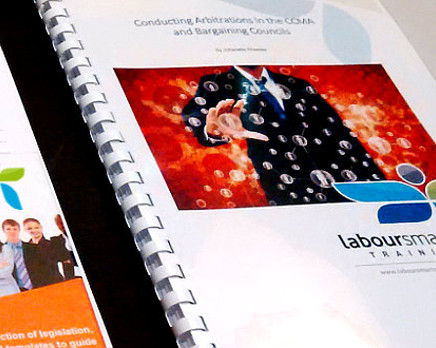- Course Name
- DL23 - New Code of Good Practice - Harassment
- Course Description
New Code of Good Practice aimed at eliminating Harassment in South African workplaces – Inclusive of Sexual Harassment To expand upon the current understanding of Harassment in workplaces, to include the new code of good practice which is aimed at eliminating harassment as a whole. The new code of Good Practice was developed to be inclusive of various additional forms of Harassment. This course will equip employers with a befitting understanding of what their obligations in respect of Harassment in the workplace entails, inclusive of outlining their new requirements proposed for all employers alike. It will further assist employers in relation to legislation and the applicable processes to be followed. The three-hour online workshop is designed to provide guidance on how to identify Harassment under the new code; how to deal with the challenges of Harassment; what the applicable procedures are to follow within the ambit of legislation, and Policies of the employer. The workshop should be attended by managers, HR managers and practitioners, shop stewards, and union representatives.
- Duration
- 3 modules
- Cost
- R2 950.00
Module Module 1 : The Concept of Harassment
Module 1: Session 1: The Concept of Harassment
- Introduction to Harassment in the Workplace [Sexual Harassment and Elaborated Harassment inclusive]
- The predecessor of the new code aimed at eliminating Harassment in the Workplace
Sexual Harassment
- Definition of what constituted Sexual Harassment
- Forms of Sexual Harassment
- Innuendos,
- Suggestions,
- Hints,
- Sexual advances,
- Comments with sexual overtones,
- Sex-related jokes or insults,
- Graphic comments about a person’s body made in their presence or to them,
- Inappropriate enquiries about a person’s sex life,
- Whistling of a sexual nature, or
- A strip search
- Subtle Forms also qualifying as Sexual Harassment
- Sexual Harassment as a form of Discrimination
- Sexual Harassment within the Labour Law Context
Harassment under the New Code of Conduct aimed at Eliminating Harassment in the workplace
- Definition of what constitutes Harassment under the new code of conduct aimed at eliminating harassment
- Forms of Harassment now included under the new code
- Subtle Forms of Harassment in respect of the new code
- Harassment as a form of Discrimination
Module Module 2 : Legislation protecting against Sexual Harassment
Module 1: Session 2: Legislation protecting against Sexual Harassment and Harassment under the new code
- Code of Good Practice on the Handling of Sexual Harassment Cases [“the LRA Code”]
- Objection and Application of the Code
- The New Code of Good Practice on Handling Harassment as a whole in the workplace
- The Objection and Application of the New Code
- Government Policies on Harassment; Abuse and Sexual Harassment
- The Protection from Harassment Act
- The Criminal Law (Sexual Offences and Related Matters) Amendment2
- The Labour Relations Act
- The Employment Equity Act, 55 of 1998 [“EEA’]
- Harassment Policies and Policy Statements as opposed to current Sexual Harassment Policies and Policy Statements
- What should be included/how should current Harassment Policies be amended or updated
- The importance of a Harassment Policy
Module Module 3 : How to Deal with Sexual Harassment
Module 1: Session 3: How to Deal with Sexual Harassment /Harassment as a whole
The new code identifies the steps that employers must take in the elimination of harassment, not only by virtue of placing an obligation on the employer to act, but further extending beyond this obligation an obligation to develop; implement and maintain, internally within the employer policies, procedures and practices aligned with the code.
- Factors to Establish Sexual Harassment /Harassment under the new Code
- Employers Obligations, inclusive of obligations under Section 60 of the EEA, and vicarious liability
- Consequences of an Employer not complying with its obligations
- Complaint Process/Procedure
- Formal Process
- Complaint
- Internal Grievance Process
- Referral to Council for Conciliation, Mediation and Arbitration
- Investigation
- Informal Process
- Consideration of Further Alternatives
- Sick Leave
- Confidentiality and assistance to the complainant
- Case Studies & Examples
- Questions
- Must the Harassment take place on the Employer’s premises or within working hours in order for the employer to take disciplinary action?
- Must the perpetrator of the Sexual Harassment/Harassment as a whole, hold a more senior position to the victim?
- Must the conduct be unwelcomed in order for it to amount to Sexual Harassment/Harassment?
- What if the Sexual Conduct was previously welcomed?
- What is Sexual Favouritism?
- What is Quid Pro Quo – Harassment?
- Can a single incident of unwelcome Sexual Conduct constitute Sexual Harassment?
- If the victim accepts the perpetrator’s apology for the Sexual Harassment, is the employer precluded from taking disciplinary action?
- Closing & guiding principles
The procedures dictated by the legislator seems to put forward development of policies, or amending existing policies to include the reporting process, how such complaints will be dealt with both formally and informally, as well as bearing in mind confidentiality and how and when this is to be maintained. The issue of harassment and training employees appropriately should be included in orientation and be maintained through training programmes. This should be done in a manner that is accessible.
2025 © LabourSmart Training (Pty) Ltd. All Rights Reserved. | Developed and Hosted by Resolve Technology Solutions (Pty) Ltd | SEO by NextG



